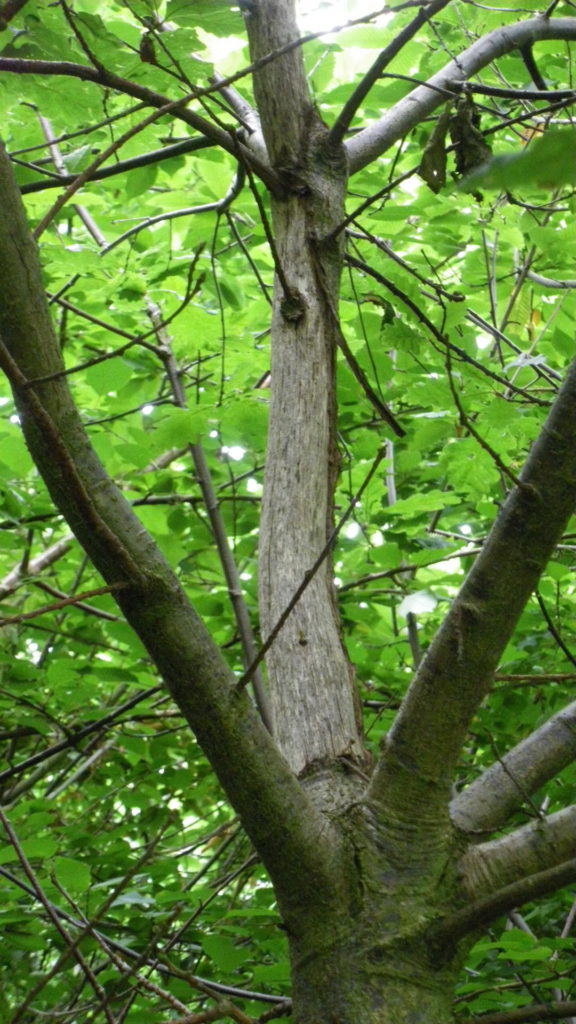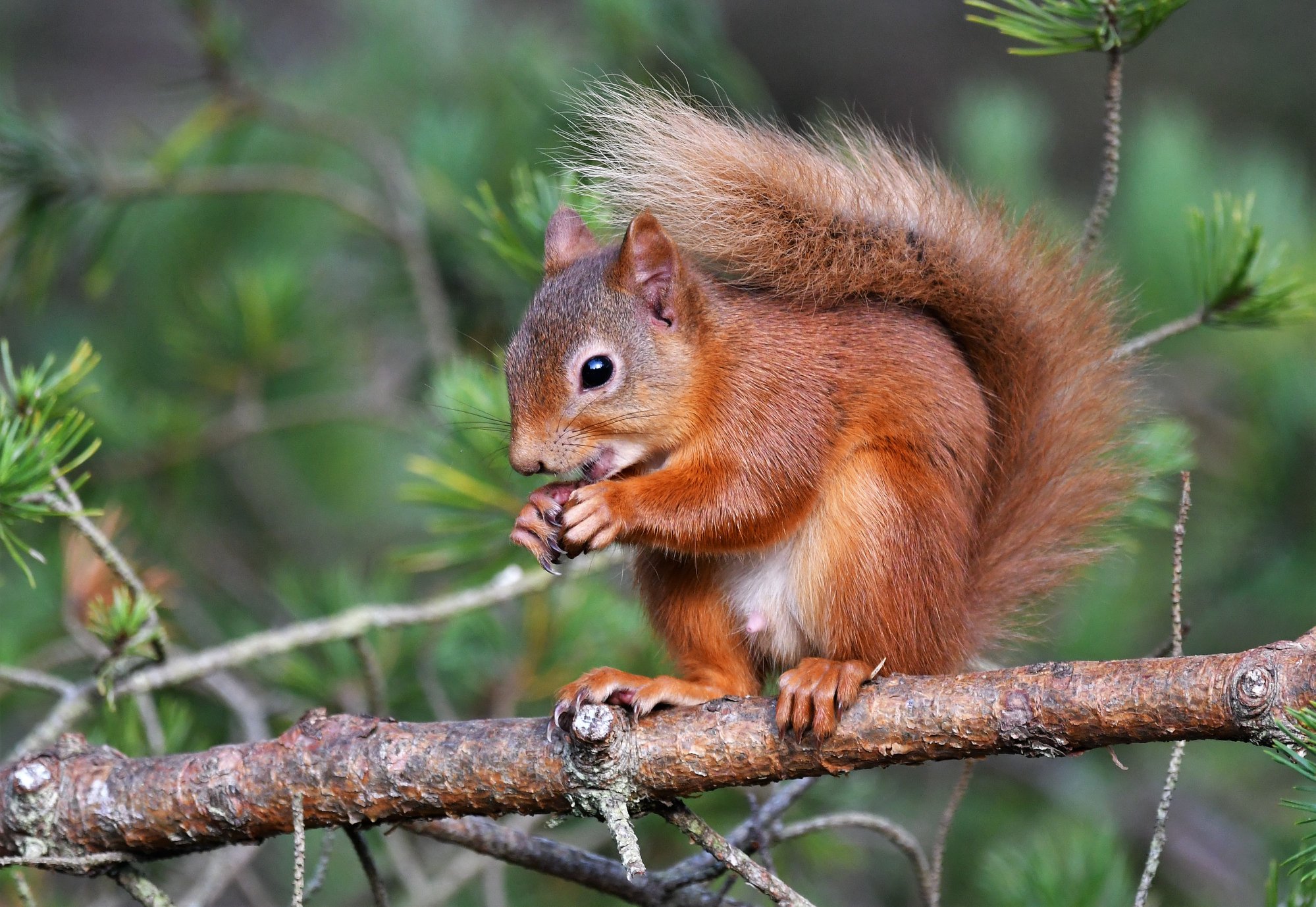What is the most important job we do in our woodland? Without a doubt, it’s controlling grey squirrels. I do this throughout the late spring and summer to prevent grey squirrels from bark stripping the trees that I have spent the winter favouring with my thinning and pruning operations.
I know that not everyone is happy about this, but believe me, if I was only allowed to do one operation in my woodland, it would be controlling grey squirrels. Without this, any other work I do is pointless.

Ten year old oak with severe bark stripping by grey squirrels
Grey squirrels are bold little creatures, and because we have a fairly wildlife denuded landscape, when we get to enjoy the antics of something as visible and entertaining as grey squirrels, it can feel quite confusing that woodland managers like us want to take them on.
Unfortunately, grey squirrels, brought to the UK from North America, really do not fit with our native ecosystems. Our trees are not adapted to their bark-stripping behaviour and the damage they do to our young woodlands is a disaster, whether your forestry interest is in conservation, carbon or timber.
And I haven’t even mentioned their impact on our native red squirrels. How I would love to see a red squirrel thriving in my healthy, productive, biodiverse woodland!

Let’s make room for reds! (Photo Gary Bruce – Highland Photographer)
By now, the grey squirrel problem is widely accepted by public organisations in the forestry, conservation, government and related private industries. Under the banner UK Squirrel Accord, there is fantastic work ongoing to help us achieve a landscape solution to grey squirrels and their threat to the health of our native woodlands and the red squirrel. If you are yet to be convinced, or are keen for more information, get stuck into the various UK Squirrel Accord films and webinars.
